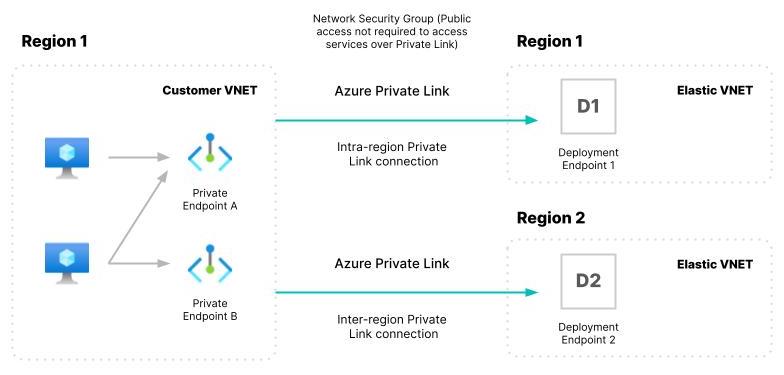All Categories
Featured
Table of Contents
- – What Is The Leading Schema Markup For Semantic...
- – What Is The Most Suitable Implementing Semanti...
- – Top Semantic Search Engines Sales Near Me
- – What Are The Top 10 Semantic Search Strategies?
- – What Is The Most Reliable Semantic Seo Check...
- – What Are The Top 10 Semantic Seo Platform?
- – Who Has The Most Reliable Semantic Seo Techn...
The internet is transforming, coming to be a growing number of semantic. Search engine optimization is additionally changing and ending up being extra semantic. This is since search engines have evolved and are moving much more and extra towards checking out web content online. Of program, that has actually likewise changed the method we develop content, particularly if we intend to rate far better in the internet search engine.
Intertwingularity is not usually recognized, individuals maintain claiming they can make things deeply hierarchical, categorizable and consecutive when they can't. Based on the connections between search intents, the search engine chooses a content in placing by calculating the range between the vectors of meaning.
It permits you to see, starting from a subject, all the entities that are relevant to that subject. This means you can plainly see which entities/concepts/ideas have actually already been covered on your web site, and you can uncover brand-new possibilities by understanding what content you can add and how to create it.
What Is The Leading Schema Markup For Semantic Seo Manufacturer
It has the ability to make your web content reasonable for online search engine on the one hand and for your audience on the various other. Structuring your web content version highlights your material and its hidden relationships so that search engines can recognize you amongst numerous items of details, making you much more visible to customers who meet the search intent relevant to your service.
In semantic SEO copywriting, an editor begins with a more comprehensive series of subjects and tailors the material to consist of semantically appropriate terms and phrases that help visitors recognize a subject, comparable to checking out web content in a wiki. From a material writing perspective, one practical way to do this is to produce a vocabulary of terms and concerns bordering your target topic.
What Is The Most Suitable Implementing Semantic Seo For Me
Find out a lot more regarding by watching the by!.

Semantic search refers to the process of how internet search engine recognize and match keywords to a searcher's intent in natural search results page. Prior to semantic search, search engines like Google ran like matchmakersaligning details words in your question with those exact words on webpages. The results were simple however often lacked depth.
Top Semantic Search Engines Sales Near Me
It enables Google to offer quick, exact solutions to search questions concerning real-world topics. When you type an inquiry word right into Google, you're not simply entering a sequence of words. You take advantage of a complicated internet of significances and links. Google's Understanding Chart sees these words as entities with context and connections.
When you browse for "Apple," Google does not simply see a word that describes a fruit. It acknowledges Apple as a business and can give associated info. It was Google's response to the rise of voice searches, where questions became a lot more conversational and nuanced.
What Are The Top 10 Semantic Search Strategies?
By incorporating NLP, Hummingbird enabled Google to relocate beyond plain keyword matching. It assisted the search engine comprehend search intent, raising the probabilities that results would precisely match the reason behind a user's search. As the 3rd most essential ranking aspect after content and links, RankBrain has actually boosted Google's semantic search capabilities to recognize the definition of search questions.
Making it a lot more efficient at handling never-before-seen search questions. RankBrain takes into consideration more than simply key words when evaluating a search query.
So it brings outcomes that match the keywords and straighten with the general intent of offering puppy training advice. And if the customer regularly looks for dog-related content, Google might prioritize much more thorough training guidesrecognizing the customer's ongoing rate of interest in the subject. Incorporating modern technologies like the Understanding Graph, Hummingbird, and RankBrain, semantic search aids the Google algorithm analyze and connect data across a substantial internet of info.
What Is The Most Reliable Semantic Seo Checklist Available
The focus changes from keyword selection to an all natural method incorporating individual intent, topical relevance, and total customer experience. Creating content that attends to the searcher's demands with comprehensive info can boost your SERP positions. Below, we lay out the trends and methods that settle the demand for semantically notified content. Later on, we supply workable pointers to turn these insights into best practices.
A wider method to content aligns much better with semantic search's shift away from specific key words matching and towards individual intent. Content that covers search queries more extensively not only satisfies users.
And five times greater than websites that take 10 secs to load. While technical SEO makes sure optimum internet site efficiency and ease of access, focusing on user experience (UX) takes it a step additionally. UX intends to develop an aesthetically attractive, user-friendly user interface with interesting, high quality material that motivates visitors to stay. Semantic search modern technology allows online search engine to go for outcomes that offer the most effective feasible UX.
What Are The Top 10 Semantic Seo Platform?

All display Google's capability to attend to a subject query comprehensively. By comprehending the context and intent behind individual queries, search engines can provide much more pertinent information and potentially increase individual interaction. Personalization in search results creates much better UX.Based on your past search history and preferences as an individual, semantic search aids look engines tailor the outcomes to suit your special demands and passions.
It fetches outcomes that match the search phrases and align with the overall intent of providing young puppy training advice. And if the individual regularly looks for dog-related content, Google could focus on extra comprehensive training guidesrecognizing the individual's continuous passion in the subject. Combining technologies like the Understanding Graph, Hummingbird, and RankBrain, semantic search helps the Google algorithm interpret and link information throughout a vast web of info.
Who Has The Most Reliable Semantic Seo Techniques?
The focus shifts from keyword selection to an alternative strategy encompassing customer intent, topical relevance, and overall user experience. Creating web content that deals with the searcher's demands with comprehensive info can improve your SERP rankings. Listed below, we detail the patterns and techniques that consolidate the need for semantically educated material. Later on, we supply workable pointers to transform these understandings into best practices.

A broader approach to content aligns better with semantic search's change away from specific search phrase matching and toward user intent. Material that covers search questions more completely not just satisfies users.
UX intends to develop a visually appealing, easy to use interface with engaging, high quality content that encourages site visitors to remain. Semantic search innovation allows search engines to aim for results that supply the ideal feasible UX.
All showcase Google's capability to resolve a topic query comprehensively. By comprehending the context and intent behind individual inquiries, online search engine can deliver extra pertinent info and possibly raise user involvement. Customization in search results page makes for far better UX.Based on your past search background and preferences as a user, semantic search helps internet search engine customize the results to suit your special needs and interests.
Table of Contents
- – What Is The Leading Schema Markup For Semantic...
- – What Is The Most Suitable Implementing Semanti...
- – Top Semantic Search Engines Sales Near Me
- – What Are The Top 10 Semantic Search Strategies?
- – What Is The Most Reliable Semantic Seo Check...
- – What Are The Top 10 Semantic Seo Platform?
- – Who Has The Most Reliable Semantic Seo Techn...
Latest Posts
What Is The Most Suitable Semantic Search Algorithms?
Which Is The Leading Best Semantic Seo Tools Plan
What Is The Most Reliable Seo For Semantic Search?
More
Latest Posts
What Is The Most Suitable Semantic Search Algorithms?
Which Is The Leading Best Semantic Seo Tools Plan
What Is The Most Reliable Seo For Semantic Search?